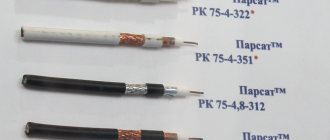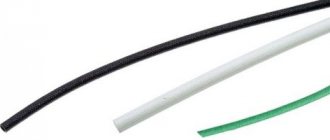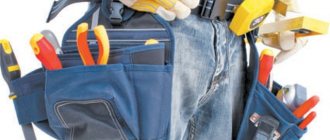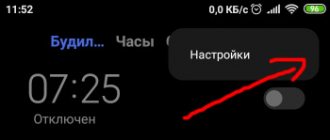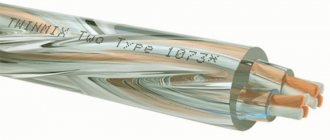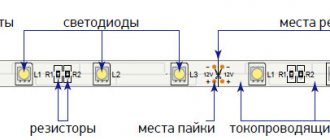A cable called “twisted pair” consists of several insulated conductors that are twisted together in a certain way. This type of wire is very often used in telecommunications circuits, in particular for connecting the Internet to a personal computer or laptop. This article will discuss what structure a twisted pair Internet cable has, and which one is better to choose for installation inside or outside the house.
twisted pair
What is twisted pair cable
Not all network users understand what twisted pair cable for the Internet is. This is a cable that contains a bundle of several wires that are crimped into one common bundle. In simple words, these are insulated conductors that are connected in a certain way.
The wire usually has four or two internal cores (maybe more). This type of connection is necessary so that each wire has the same conditions in terms of resistance to interference (regardless of the existing router). It is important to consider that different voltages are applied to the conductors of the same pair. In this way, a reliable information signal can be provided.
Design features
This wire got its name precisely because of its design features. Several copper wires are insulated from each other using a special twisting method. Thus, a kind of couple is obtained.
As an example, we can consider the option of two wires that are connected together. In most cases, this option is used to gain access to the Internet. In this option, one core will transmit data, and the second will serve as a signal receiver.
These days, optical fiber is often used and consists of many pairs. This is a very convenient way to transfer data for home Internet. Using this type of wire, you can save money if you connect one device to several subscribers. Such savings will not incur a deterioration in quality, although some users believe that the data transfer speed on such equipment is reduced - these are just arguments not supported by facts.
Important! Each twisted pair consists of one conductor, as well as an outer sheath for additional protection. You can also additionally purchase various design additions, for example, special shielding, which will protect the wire from the sun and other external influences.
Characteristics of twisted pair
Twisted pair wire is divided into several types - internal and external. If the model is made for placement inside the house, then additional protection is not required.
External types (for outdoors) of wires are equipped with special screens for additional protection. This is a shell that protects against mechanical damage, as well as the penetration of moisture and dust inside. There may also be wires with a fire-resistant sheath, designed to be placed in objects that can catch fire.
Installation of twisted pair at home
Protected cables can work safely in heat, snowfall and rain, that is, in any weather conditions. In addition to the external cable, you can attach a special cord that protects against strong gusts of wind (used if the cable is suspended on a pole). These are hanging models of wires that are not attached to walls.
In addition to the above properties, twisted pair also has additional characteristics, which it is advisable to learn more about before purchasing and installation.
Number of pairs in twisted pair
This characteristic shows the number of pairs that are used in one product. It has already been said above that you can find wires with two or four pairs. The greater their number, the greater the degree of communication between the conductors in the bundle. This means that electrical noise affects both wires, reducing interference from various sources and maintaining the same level of data transmission.
Number of cores
There are several types of wires that differ in the number of cores in a twisted pair:
- Option No. 1 - single-core. It is a wire whose cross-section is created by only one conductor.
- Option No. 2. If the wire is stranded, then it has several sections that are intertwined.
Important! Multi-core cables are much more flexible than single-core options, so users often prefer them because of ease of installation.
Cable thickness
The diameter of the assembled cable in question ranges from 5.2 to 6 mm. The internal conductors, hidden under the protective shell, are approximately 0.6 mm thick.
The thickness of the insulating layer is 0.2 mm. The sheath of four-pair cables is approximately 0.9 mm.
Conductor material
Which cores are used in twisted pair for the Internet is an important issue that affects the properties of the wire. Pure copper is usually used to make conductors. However, recently, research has begun to reduce the cost of flexible core construction. One obvious solution in this direction is to replace the specific material used with a combination of different types.
Copper wire
For example, some manufacturers produce cables with aluminum conductor, which is much cheaper and lighter than copper, but has good electrical conductivity. However, despite the above-described advantage, this material also has disadvantages:
- mechanical strength during bending is significantly less than in the existing version - the cable will simply break if it is bent often, and therefore this option is only suitable if it is securely fixed and not touched;
- difficulty in making wires;
- The wire may be subject to corrosion if used in some harsh environments.
To solve these problems, for example, the French company manufactures cables from alloyed aluminum, to which parts of other alloys are added to improve the protective and mechanical properties.
Shell material
The shell material is a particularly durable plastic, as well as an additional copper braid. Polyethylene is often used to make the sheath, which can protect the wire from direct sunlight. If the cable has additional layers of protection, the packaging will indicate this. The disadvantage of polyethylene is that it burns very well. Used in temperature zones from -60 to +80 °C.
There is another type of shell - made of chlorinated polyethylene. This material is not flammable and is also chemical resistant. Can be used in temperature zones from -35 to +90 °C.
There are other materials for the shell (various compounds), but their use is unsafe because they react with various substances and can be toxic.
The traditional shell material is PVC. It can be used in temperatures from -20 to +60 °C.
Important! Cables for domestic and outdoor use can be distinguished by the color of the sheath. The color used for the house is gray, the color of the outer shell is black.
The cables also differ in the shape of the sheath - depending on the place where it needs to be laid. For example, for normal use a round shape is used, but for installation under carpeting or a TV stand, you can find a cable that has a flat shape (for convenience).
Gray version - for home
As a rule, this information is enough to understand which Internet cable to choose for your apartment.
Important! You need to choose a cable not by how it will look - the main thing here is the parameters.
How to repair or change the plug on a network cable
It also happens that you have to replace the plug on the cable and repair it. You can use a screwdriver. It’s worth saying right away that if the crimping is of poor quality, failures and loss of signal will occur regularly, and the connection will be broken. You can do the installation as follows:
- Remove the cable insulation and unscrew all the wires located inside it;
- Measure the distance along the entire body of the plug so that the wires reach the contacts, and the outer layer of insulation ends in the connector itself for greater reliability;
- Install the cable and fix all the wires along the contact channels;
- Tighten the lock and “sink” the plug contacts into the veins.
- Check the cable for functionality.
How to check if the Internet cable is working properly If the cable suddenly stops working, then you need to figure out the reasons for this malfunction. There are not many options here:
- The cable cores do not touch the contacts in the plug;
- The plug does not make good contact with the network card slot;
- An internal cable break has occurred.
The second reason does not need to be considered for a long time, since it is not related to a cable malfunction. The first and third cases are of much greater interest. The most important check is with a multimeter or tester, that is, ringing. You can also ring each individual transaction. This is done as follows. One probe of the device is installed on one part of the cable, and the other on the second. Voltage is applied to each wire in turn. The fault, if it was a break, will be found immediately. If everything is fine with the cable, then most likely the contacts in the plug itself have come loose. You can reassemble it or buy a new one and clamp it using any of the methods described above.
It is now clear how to properly connect the Internet cable and how to fix it in the connector plug. This is quite simple to do, using not even special devices, but simple pliers or a screwdriver. It is better to repair problem wires using a multimeter.
When using materials in any form, a direct link to the site is required
Sources
- https://lanportal.ru/lan/kak-obzhat-setevoj-kabel.html
- https://rusenergetics.ru/provoda-i-kabeli/kak-obzhat-internet
- https://ros-it.biz/obslujivanie-kompyuterov-v-ofise/lokalnye-seti-v-ofise/instrukciya-po-raspinovke-i-objimu-8p8c-chasto-nazyvayut-rj45
- https://sovet-ingenera.com/elektrika/wires/kak-obzhat-internet-kabel.html
- https://domamaster.net/obzhim-vitoj-pary-sxema/
- https://lanportal.ru/lan/poryadok-obzhima-vitoj-pary.html
- https://ichip.ru/sovety/ekspluataciya/kak-obzhat-internet-kabel-v-domashnih-usloviyah-679872
- https://WiFiGid.ru/poleznoe-i-interesnoe/kak-obzhat-vituyu-paru-na-8-zhil
- https://help-wifi.com/poleznoe-i-interesnoe/kak-obzhat-setevoj-kabel-bez-instrumenta-otvertkoj/
Jan 25, 2021
Twisted Pair Categories
Currently, twisted pair wires have 7 categories, each of them has its own characteristics and purpose:
- A common pattern used on telephone lines. It consists of several wires that are not intertwined. Used for data transfer.
- A more complex sample of twisted conductors. Transmits data in the frequency range up to 1 MHz. This option can be seen in use quite rarely.
- SAT-3 is a wire that transmits data at a frequency of up to 16 MHz. Consists of nine intertwined wires. Before being put into operation, it undergoes all necessary checks of data transmission parameters. Recommended for local network connections.
- SAT-4 - data transmission at a frequency of up to 20 MHz. It is used extremely rarely, since it differs little from the previous type, and therefore manufacturers recommend purchasing wire of the next category immediately.
- CAT-5 is the most popular model at the moment. Transmits data at a frequency of 100 MHz. The number of turns in a pair is at least 27. Used in high-speed networks.
- SAT-6 is an improved version of the previous model (200 MHz).
- SAT-7 - data transmission at frequencies up to 600 MHz.
The cable type is selected depending on the required parameters.
Marking
Twisted pair wire is divided into 4 types depending on the marking. The parameter indicates the screening method.
Cable markings:
- UTP - no shielding.
- FTP - foiling is used.
- STP - there is no shielding, but the wire is protected.
- SFTP - twisted pair shielding is available.
Important! Particular attention should be paid to marking if the cable will be installed in production.
Crimping diagram
RJ-45 connectors are used to crimp the cable.
That’s what people called them, the correct name for these connectors is 8P8C.
Twisted pair crimping is described in detail in another article; it occurs in a direct or reverse manner. The first option is mainly used. These standards are indicated in the diagram.
Sometimes cross crimping (cross) may be required; it is used to connect identical equipment, for example, computer-to-computer, router-to-router, etc.
Standards, certification
Standards are divided into two types. The first is Ethernet, which indicates the speed of information transmission, as well as the state of transmission and the like.
The second type is networks structured by cable. These indicators indicate the possibility of laying the cable and the types of connecting materials.
From this it follows that when creating a twisted pair cable, the manufacturer is guided by the following nuances: what type of Internet will be served by a particular wire, and what cable systems can be used for laying and connecting to the panel.
Currently, there are 3 main standards for twisted pair cables:
- American - EIA/TIA.
- International - ISO/IEC.
- European - CENELEC.
Using the correct standard when choosing a wire, you can achieve maximum performance from the created system for at least 10 years.
Internet connection using fiber optic
The most widespread Internet in the Russian Federation, the network of which operates on the basis of optical fiber, is provided by the provider Rostelecom. How to connect fiber optic internet?
First you just need to make sure that the optical cable is connected to the house. Then you need to order an Internet connection from your provider. The latter must provide connection data. Then you need to configure the equipment.
It is done like this:
- After installing the optical fiber and connecting the equipment that ensures operation in optical passive networks, the provider’s employees perform all subsequent configuration independently.
- First of all, install the yellow cable and socket as shown in the figure below.
- You can have your own Wi-Fi router; you don’t have to purchase a router from Rostelecom. Wi-Fi is connected to a fiber optic cable, an optical terminal and a main cord, through which the router is connected to an optical outlet.
- It is necessary to choose the most ventilated place possible for installing all equipment. The installer from the provider company should indicate exactly where the network elements need to be installed.
The terminal is equipped with a special socket that allows you to connect to a computer and connect the router to the Internet. In addition, the terminal has 2 additional sockets that allow you to connect an analog home telephone to a fiber-optic connection, and several more sockets are provided for connecting television.
Methods for determining cable quality
To decide which cable you need for the Internet, you first need to look at the brand. It is advisable to choose options from American or Swiss companies: Mollex and Reichlea, respectively.
The next method is to inspect the core material (there is no need to make a cut, just ask for a sample in the store). The highest quality option, as mentioned above, is made of copper. You can also look for bimetallic conductors on sale, which have lower performance, but they are still quite acceptable.
The third thing you should pay attention to is the thickness of the cores. If the manufacturer produces a high-quality option, then the core should have a diameter of approximately 0.51 mm or even higher. If the wire is less thick, then most likely it was produced at an unbranded factory.
And the last thing is the presence of a certificate (not what the Internet wire is called, but a certificate).
For reference! Every reputable manufacturer carries out certification, which indicates the quality of the product produced.
Rating of twisted pair manufacturers
You can find a fairly wide range of twisted pair cables. To choose the most suitable option for specific conditions, you need to pay attention to manufacturers, who are divided into three categories.
Premium level
Premium cables are of the highest quality, but also priced accordingly. Among the manufacturers, the brands Mollex, Hyperline, Nikolan should be highlighted. The price of the wire is approximately 15-25 rubles (for 2022).
Ethernet wire
Average level
The category includes the Netlan brand. Cable prices are lower - a little more than 10 rubles per meter (as of 2022). How much wire is needed for the Internet in the house is up to the user to decide by measuring the area of the apartment.
The middle class of cables is currently most in demand on the Russian market. They can be used for connecting the Internet both at the enterprise and at home.
Choices.
To lay a home or apartment network with a speed of up to 100 Mbit/s at a minimal price, you can use a 2-pair unshielded cable of category 5e. It costs from 500 to 1200 rubles per 100m.
To lay a home or apartment high-speed network (or a network with a reserve for development), you should use category 6 cable. This costs from 1300 to 3300 rubles per 100 m.
If you need a cable to lay a communication line in conditions of strong interference from production equipment, pay attention to shielded cables and ensure the presence of high-quality grounding in the places where the cable is laid and where network equipment is installed. Shielded cable will cost from 1300 to 3500 rubles per 100 m.
To lay a LAN communication line outdoors, you will need an appropriate cable at a price of 1500-3500 rubles per 100 m.
If the cable is still supposed to be pulled between the supports, then you should pay attention to the presence of a supporting cable. This will cost 2800-3500 rubles per 100 m.



